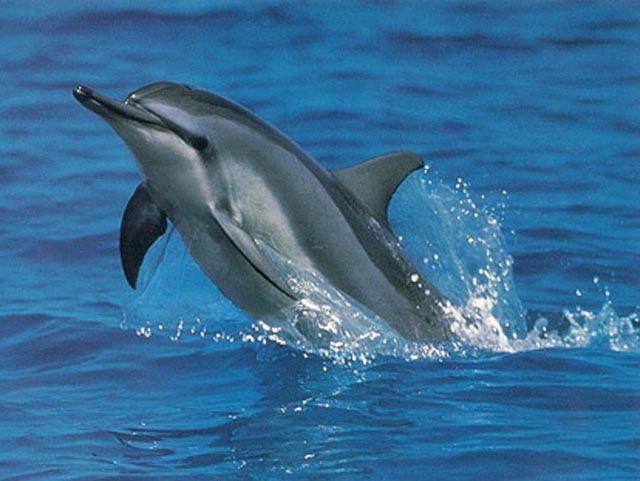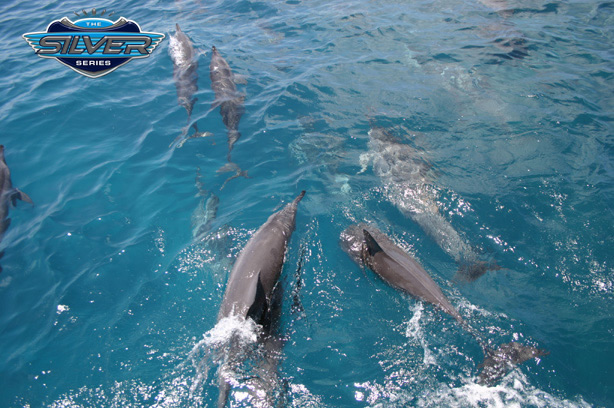A common questioned asked by visitors to the Great Barrier Reef is “will we see any dolphins?”. The answer is always a definite possible maybe, as they are certainly out there, but not always seen by observers, and it quite often depends on the weather (i.e. if it’s rough, they are seldom seen).
Dolphins belong to the cetacean group, which includes their larger relatives, the whales. Dolphins are basically toothed whales, and as such, are grouped with pilot and sperm whales, as opposed to the baleen group, which have straining plates to sieve plankton. The best known species in this group are the humpback whales.
Dolphins evolved from mammals that have returned to the sea, and over millions of years have perfected a streamline body extremely efficient for movement through the water. Their tails are horizontal (as opposed to vertical in fishes), and lack any bone support, and through a series of tendons are able to produce powerful strokes to move through the ocean.
Being mammals, they need to surface to breathe, especially when involved in high speed chases. Dolphins can dive deep, but they need to surface every few minutes. By regulating their blood flow, they can redirect O2 rich blood to vital areas, such as the heart and brain, and shut down other organs when they dive.
The most common species encountered on the reef is the spinner dolphin, named because of the aerial behaviours they perform when leaping out of the water. These small dolphins will often ride the pressure wave off the bow of slow moving vessels, allowing tourist to get a great view.
Dolphins are incredibly vocal, making clicking and whistling noises that can be heard underwater. The clicking noises can also be used as a form of sonar, allowing the dolphin to sense what’s around it. The clicks rebound off any surface and return to the sender, allowing the dolphin’s well developed brain to interpret the message.
Dolphins form large groups called pods, and there is a strict social hierarchy within the group. Some female dolphins will assist in mid wife duties, and mourn with families when a member dies. Adults will attempt to deter predators such as sharks away from the pods, and diligently defend their babies. The exact intelligence of dolphins, however, is difficult to assess. Even though they have large brains, it doesn’t necessarily equate to intelligence.
Dolphins are under threat from a variety of sources. They are potentially vulnerable to pesticides and other contaminants, as they feed on fish high in the food chain. They have been found caught and drowned in the shark nets along the Queensland coast, even though “pingers” were introduced to lower this casualty rate. Habitat disturbance and excessive underwater noise can also cause problems, and then there is the presence of boats, both commercial and recreational.
Two particular species, the Irrawaddy dolphin and the Indo-Pacific humped-back dolphin are subject to considerable threat due to the fact that they have a coastal existence. These species have been identified by the Great Barrier Reef Marine Park Authority (GBRMPA) as threatened, and as such, a policy was implemented a few years ago to assist in their management.
For one of our marine biologists (Russ Hore), one of the best experiences he had on the Great Barrier Reef in the last 15 years was being approached by a large (200+) pod of chattering spinner dolphins, with babies poking out of the group, and over-protective mothers herding them back in. They never took their eyes off him, and he really felt you can sense their intelligence. Anyway, as the late great Douglas Adams said, “So long, and thanks for all the fish”.



